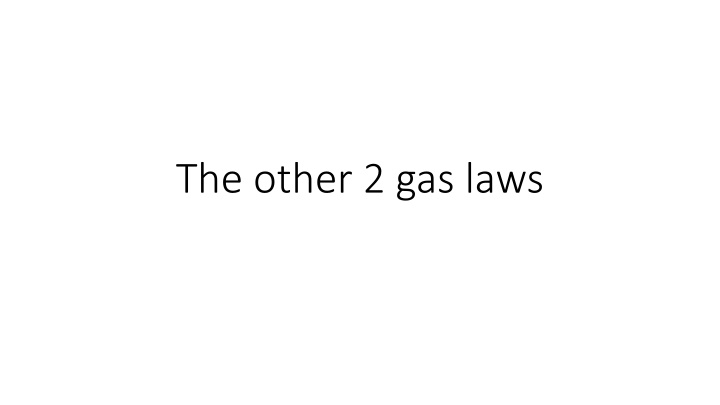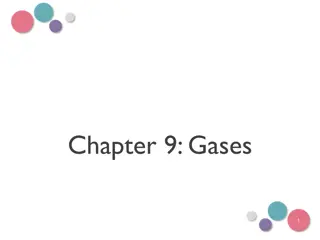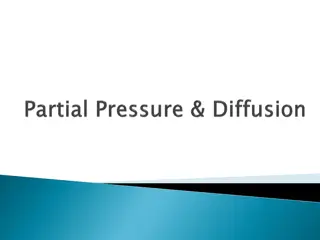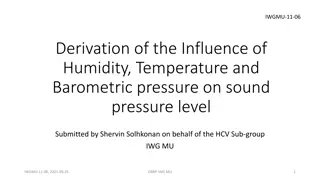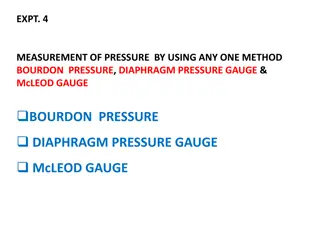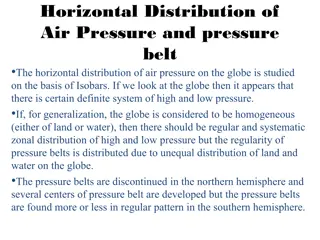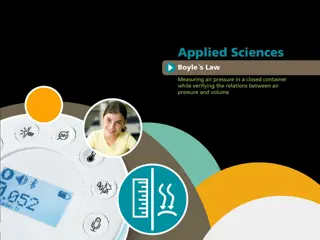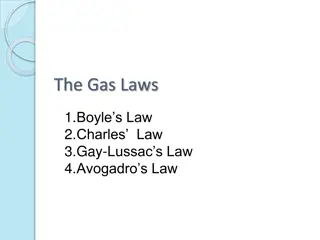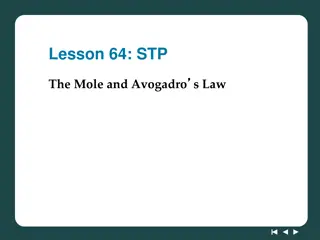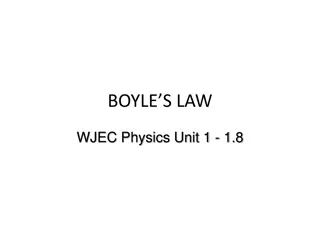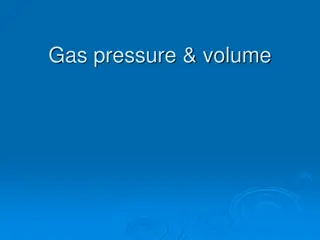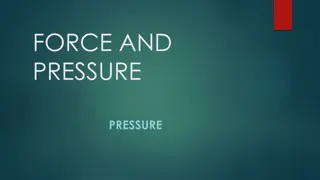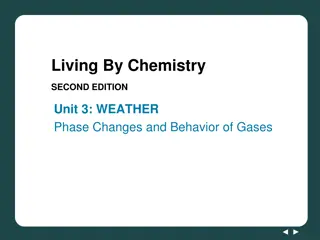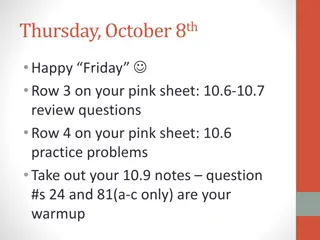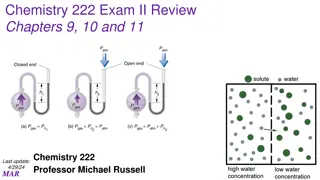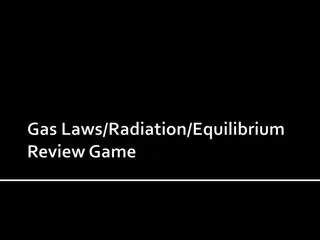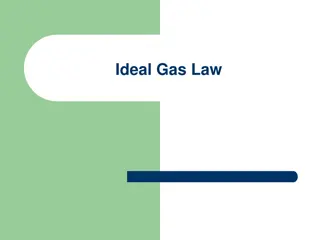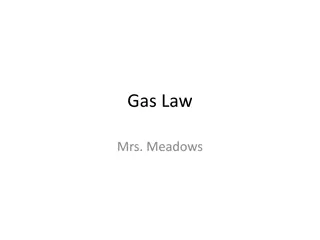Gas Laws: Temperature, Volume, Pressure
Temperature changes affect the volume of gases, as demonstrated by Jacques Charles in 1787. Charles' Law states the direct relationship between gas volume and Kelvin temperature. Gay-Lussac's Gas Law highlights how pressure varies with temperature changes under constant volume conditions. Explore the graphical representation of Charles' Law and understand the impact of temperature on gas pressure.
Download Presentation

Please find below an Image/Link to download the presentation.
The content on the website is provided AS IS for your information and personal use only. It may not be sold, licensed, or shared on other websites without obtaining consent from the author.If you encounter any issues during the download, it is possible that the publisher has removed the file from their server.
You are allowed to download the files provided on this website for personal or commercial use, subject to the condition that they are used lawfully. All files are the property of their respective owners.
The content on the website is provided AS IS for your information and personal use only. It may not be sold, licensed, or shared on other websites without obtaining consent from the author.
E N D
Presentation Transcript
Temperature Changes & Matter Solids & Liquids expand/contract as temperature changes usually very small change Gases show large volume changes with temperature changes
Jacques Charles Balloonist 1787 did experiments showing how volume of gases depends on temperature
Charles Law Charles Law In Charles Law, the Kelvin temperature of a gas is directly related to the volume. P and n are constant. when the temperature of a gas increases, its volume increases. 4
Data for Volume-Temperature Temperature ( C) Trial Volume (mL) 1 10 100 2 50 114 3 100 132 4 200 167 5 300 202
Charles Law: Graphically Plot V vs Kelvin T Straight line passing through 0rigin relationship between V & T is direct
Charles Law: V and T Charles Law: V and T For two conditions, Charles Law is written V1 = V2 (P and n constant) T1 T2 Rearranging Charles Law to solve for V2 T2 x V1 = V2x T1 T1 T1 = V1x T2 V2 T1 7
Gay-Lussacs Gas Law Discovered by Joseph Louis Gay- Lussac in the early 1800's. This law relates to how temperature affects the pressure of a gas when the volume is constant.
Temperature vs. Pressure Lussac s Gas Law states that if the temperature of a gas is increased, and the volume is held constant, the pressure of the gas will also increase. On the other hand if the temperature of a gas is decreased, and the volume is held constant, the pressure of the gas will also decrease.
Temperature vs. Pressure When the temperature is increased the gas molecules will move faster and they will impact the container walls more often. This increases the gas pressure inside the rigid container (volume stays constant).
Direct Relationship Gay-Lussac's Law is a direct mathematical relationship. This means that there are two connected values and when one goes up, the other also increases.
Gay-Lussacs Law In Gay-Lussac s law, the pressure exerted by a gas is directly related to the Kelvin temperature of the gas. volume and amount of gas are constant.
Kelvin temperature Throughout the notes, It repeatedly states kelvin temperature. This is the temperature scale that is used when studying gasses. This is a temperature unit, temperatures should be in when solving Gas law problems. The conversion to the kelvin scale is .. K = C + 273
